We may receive a commission when you use our affiliate links. However, this does not impact our recommendations.
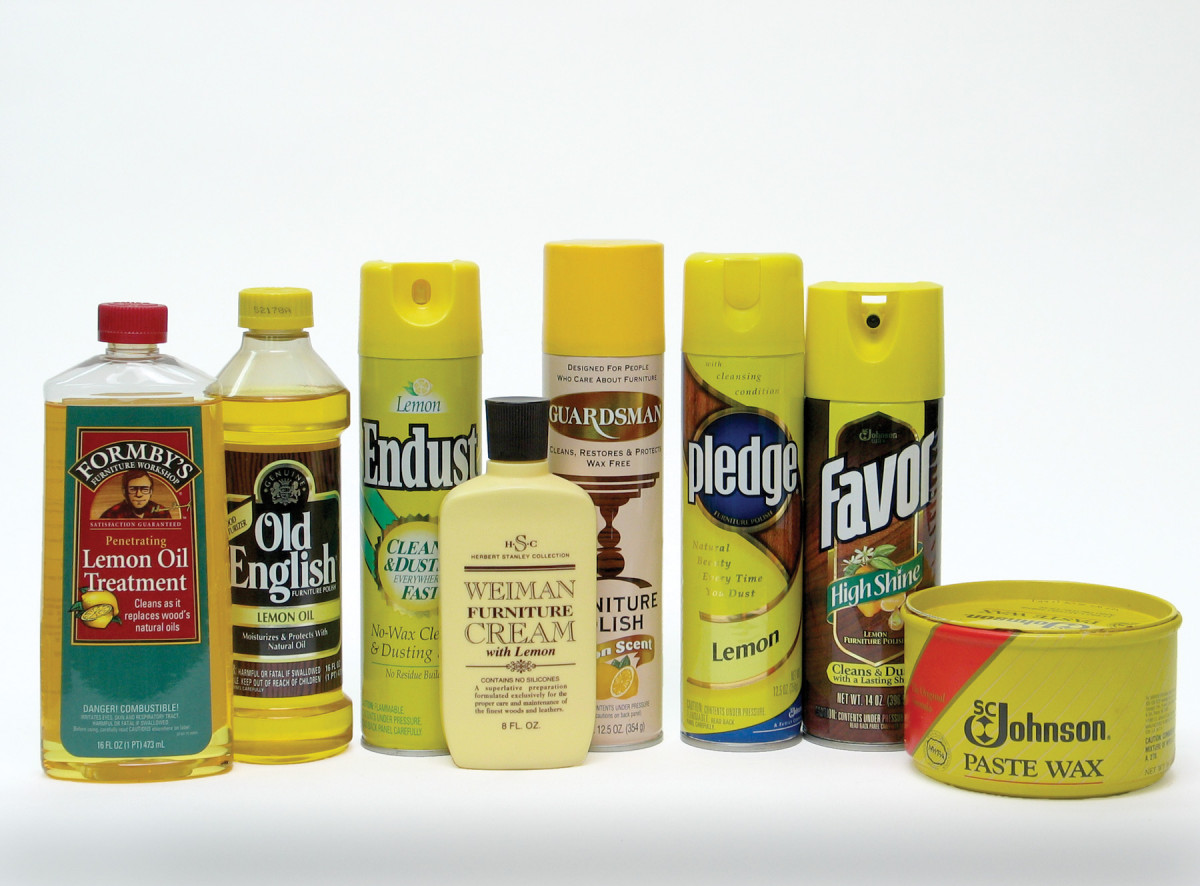
1. There are four types of furniture-care products. From the left are examples of clear polishes, emulsified polishes, silicone polishes and paste wax.
There are only four categories, so it’s easy.
There are probably more myths surrounding furniture polishes than any other single aspect of wood finishing. What makes this topic confusing are the often-silly claims of manufacturers. They range from half-truths, such as “furniture polish preserves the finish,” to outright absurdities, such as “furniture polish replaces the natural oils in wood.”
The success of the furniture polish industry in convincing millions of consumers that there’s oil in wood that needs replacing with a petroleum-distillate product through a finish that’s there to keep liquids out of the wood has to rank among the great scams of American marketing.
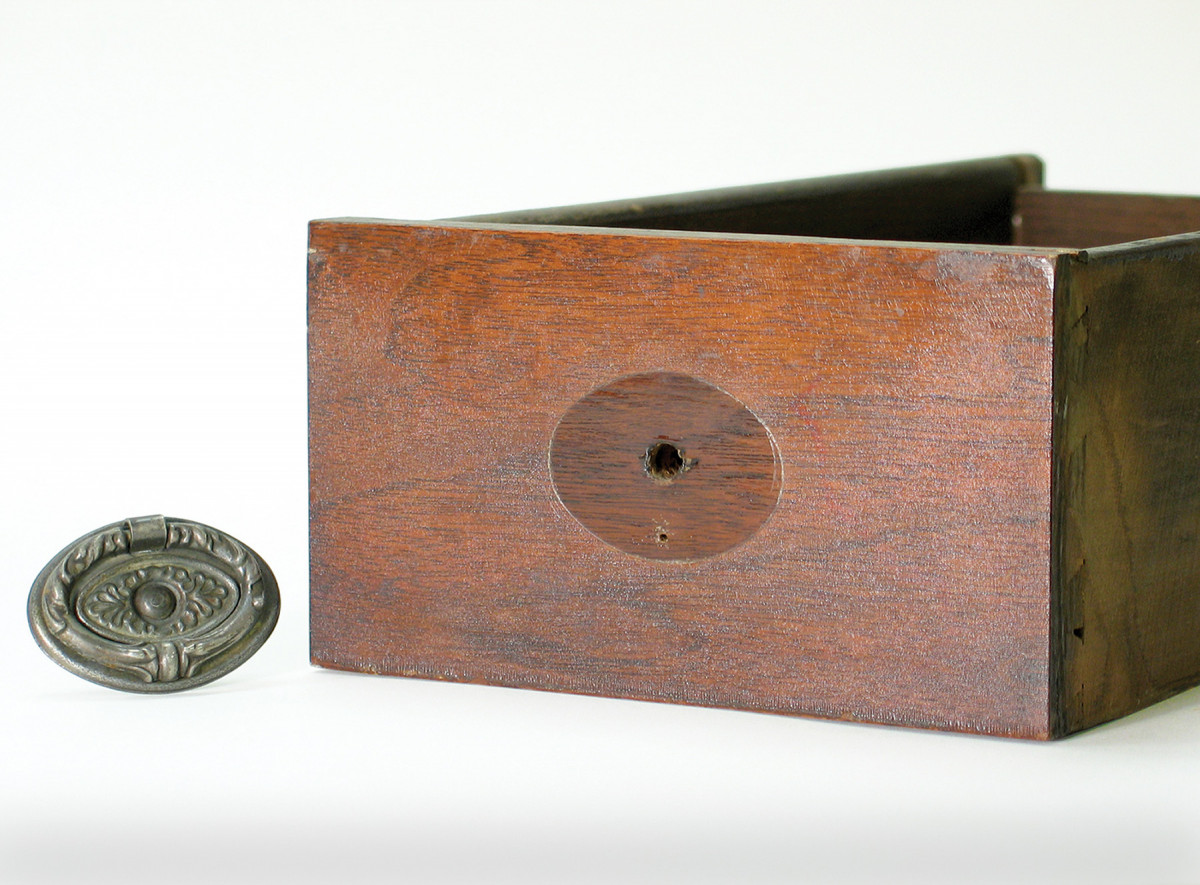
2. It’s ultra-violet light that is primarily responsible for the deterioration of finishes. Notice the middle of this 100-year-old drawer front where the pull had blocked the UV light. The finish is nearly like new.
Deceptive marketing has shifted the emphasis away from the real benefits of furniture polish as an aid in dusting, cleaning and adding a pleasant scent to a room (more important to consumers than you might think). In addition, some polish manufacturers have totally misrepresented the beneficial role of wax. Instead of pointing out its long-lasting shine and wear resistance, they have made wax into a problem, claiming that it keeps wood from breathing by stopping up its pores, and that it builds up to create a smeary surface.
It took me years to work my way through the myths. But when I did, I realized how easy furniture polishes are to understand. This is because there are only three types – four if you include wax.
Keep in mind that it’s not the wood that is being cared for. It’s the finish, and all film-building finishes, except shellac, are plastics, and shellac acts like a plastic. So the most important things a person can do are to keep the plastic shielded from UV light (which causes cracking) and reduce abuse (scratches and dings).
Products
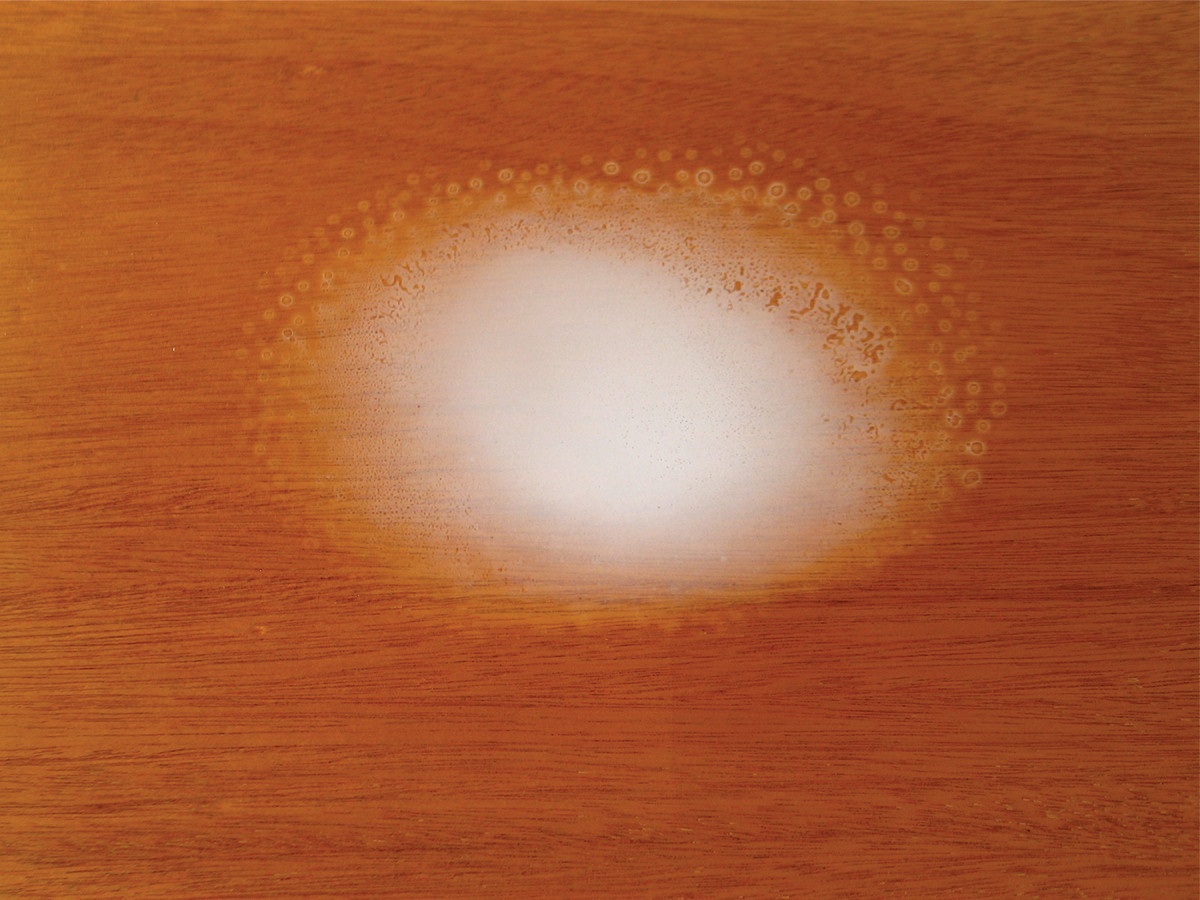
3. Emulsified furniture polishes are composed of both petroleum-distillate solvent and water for better cleaning. They are easy to identify by the milky-white puddle they produce when sprayed thickly.
There are four categories of furniture-care products: clear polishes, emulsion polishes, silicone polishes and wax. Within each category, the only significant differences are scent and color (if these are added).
Clear polishes are usually composed entirely of slow-evaporating petroleum distillates, but they may contain related solvents such as citrus or turpentine. Just as you would expect from your understanding of paint thinner, clear polishes clean grease and remove wax, but they don’t remove water-soluble dirt such as soft-drink spills or sticky fingerprints.
Most clear polishes are packaged in plastic containers, which makes identification easy – the liquid can be seen as clear. Because clear polishes evaporate off the surface within a few hours, they aren’t effective at adding long-lasting shine or scratch resistance.
Emulsion polishes are a combination of petroleum distillates and water, and are always milky-white in color. The combination makes these polishes fairly effective at cleaning both grease and water-soluble dirt. But because the ingredients evaporate rapidly, these polishes also don’t add long-lasting shine or scratch resistance.
Most emulsion polishes are packaged in aerosols and are easily identified by their milky-white spray.
Silicone polishes are clear polishes or emulsion polishes to which a small amount of silicone has been added. Silicone is a synthetic oil resembling mineral oil, but noticeably slicker. In addition to making a finished surface slick and thus resistant to scratches, silicone remains on a surface until it’s worn or cleaned off. Silicone also creates the appearance of greater depth in wood.
Because silicone polishes can be either clear or milky-white, they aren’t easy to identify – except by the smear they sometimes leave, even days later, if too much has been applied. Unfortunately, no manufacturer lists silicone as an ingredient on their container.
Wax is a solid at room temperature and thus provides long lasting shine and scratch resistance. Wax is available to consumers both as a paste and as an ingredient in a liquid. When in a liquid, the wax settles and appears white at the bottom of a container. Wax is seldom a significant ingredient in aerosols because it clogs the nozzle.
How to Choose
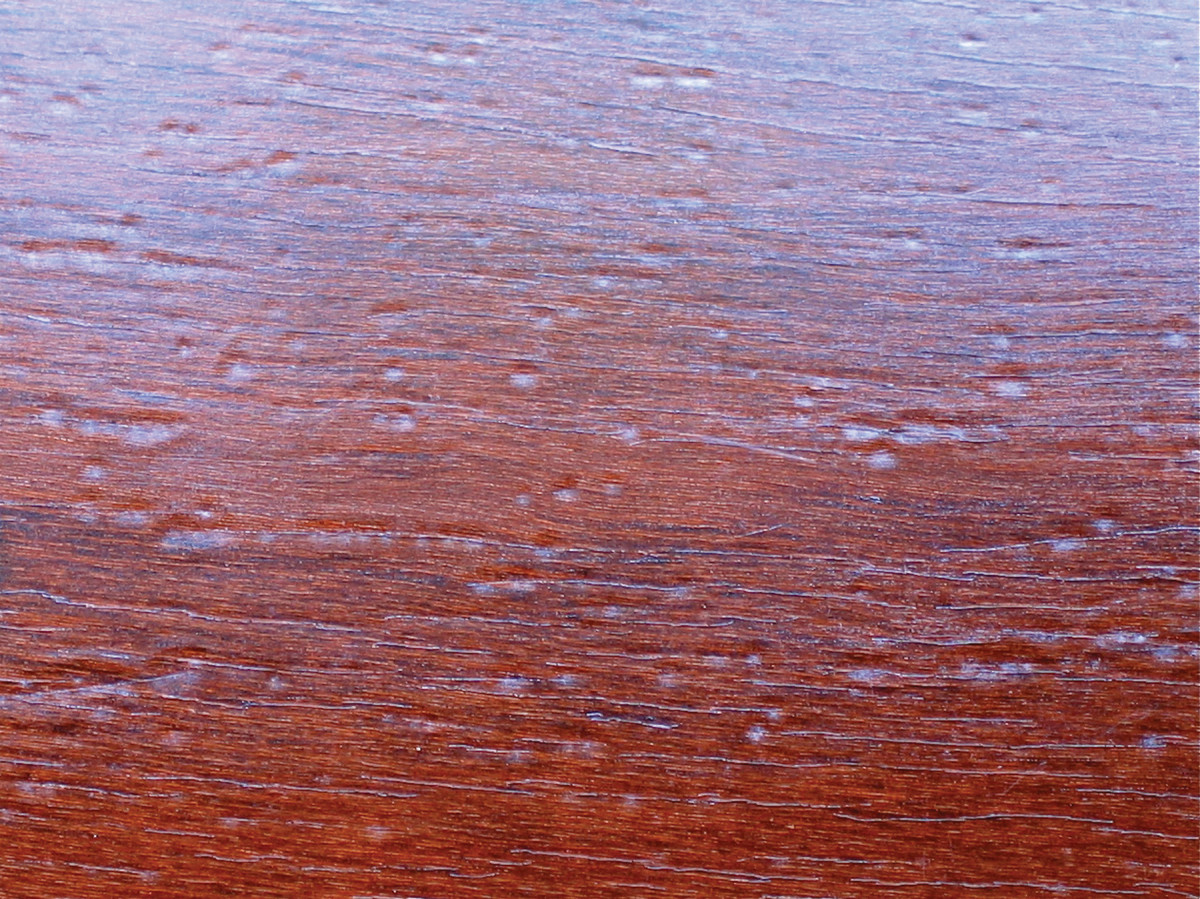
4. Fish eye, which is also called cratering for obvious reasons, is the result of silicone from some very popular furniture polishes getting into the wood and causing the finish to pull away from the very slick silicone.
Choosing among the four types of furniture-care products is easy.
For simple dusting with an inexpensive, pleasant-smelling liquid that causes dust to stick to a cloth and lubricates the surface so the dust doesn’t scratch it during polishing, choose a clear polish.
For cleaning in addition to dusting, choose an emulsion polish.
For fairly long-lasting shine and scratch resistance without the effort of using wax, choose a silicone polish. For better cleaning, choose one of the emulsified silicone polishes.
For near permanent shine and scratch resistance, choose wax, but keep in mind that wax is much more difficult to use because of the extra effort required to buff off the excess, and that a water-dampened cloth or chamois, not furniture polish, should be used for dusting so as not to remove the wax.
For old, crazed finishes, wax is the best choice because it adds fairly permanent scratch resistance to the fragile surface, and it adds shine without highlighting cracks in the finish as liquid polishes do.
Of course, none of these products have to be used. Dusting and cleaning can be accomplished using a water-dampened cloth or chamois, as is done almost everywhere else in the world.
The Silicone Issue
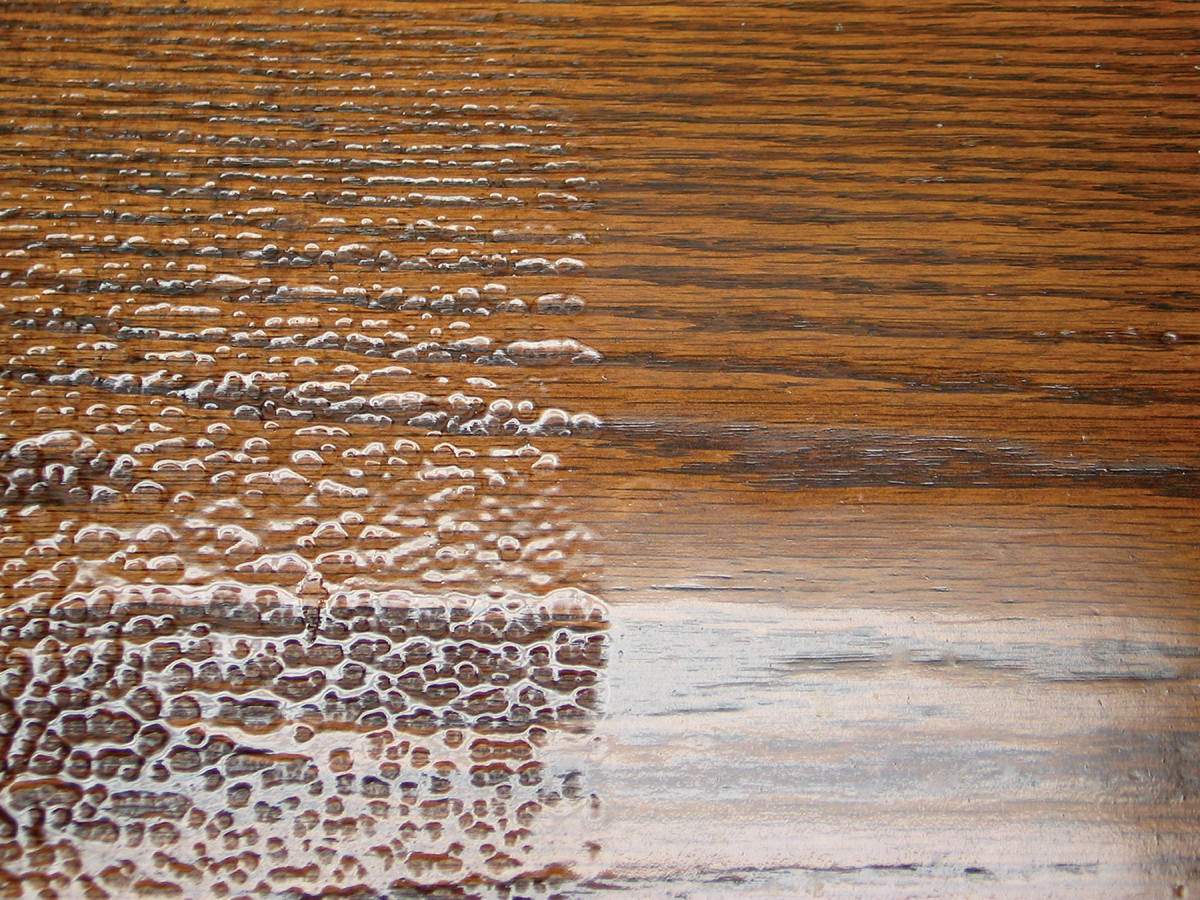
5. Shellac is very effective at sealing off silicone in the wood so another finish, such as polyurethane, lacquer or water-based finish, can flow out without problems (right half).
Silicone causes refinishing problems because of its slickness. It gets into wood through cracks in old finishes causing newly applied finishes to pull away and create crater-like patterns called fish eyes. To counter this problem, clean the wood really well, seal with shellac, or add silicone, sold as fish-eye eliminator or Smoothie, to the finish so it will flow over the contamination.
Even though silicone contamination can be dealt with successfully, doing so requires extra effort and often a lot of frustration. As a result, refinishers and conservators hate the furniture polishes that contain silicone and have been discouraging people from using them for half-a-century or longer.
Because “extra effort” and “frustration” don’t work well as explanations, however, refinishers and conservators have resorted to accusations that silicone polishes cause all sorts of damage to finishes, ranging from softening to making finishes so brittle they crack. In fact, silicone is every bit as inert as mineral oil; it doesn’t damage anything.
Consumers, on the other hand, love silicone polishes because these polishes make their furniture and cabinets look better and keep them looking better for much longer than other polishes.
Here are some supplies and tools we find essential in our everyday work around the shop. We may receive a commission from sales referred by our links; however, we have carefully selected these products for their usefulness and quality.









